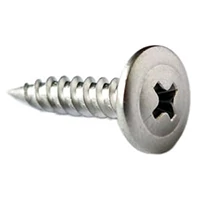buy self tapping screw head types
Understanding Self-Tapping Screw Head Types
When it comes to construction and DIY projects, choosing the right fasteners is crucial. Among them, self-tapping screws stand out for their versatility and ease of use. With various head types available, understanding these options can significantly enhance your project outcomes.
Self-tapping screws are designed to create their own hole as they are driven into materials like metal, plastic, and wood. Their unique threads allow them to drill themselves into surfaces, eliminating the need for a pre-drilled hole. This feature saves time and effort, making self-tapping screws a favorite among builders and hobbyists.
One of the most critical aspects of these screws is their head type. The head of a screw not only affects its driving performance but also its aesthetic appeal and suitability for specific applications. Here are some common head types of self-tapping screws
1. Flat Head Also known as countersunk head screws, these are designed to sit flush with the surface once installed. They are ideal for applications where a smooth finish is desired.
2. Pan Head With a rounded top and a flat bearing surface, pan head screws are versatile and easy to drive. They are often used in applications requiring a sturdy connection without the need for a flush finish.
buy self tapping screw head types

3. Round Head These screws have a dome-shaped head that provides a decorative touch while offering good bearing surface. They are commonly used in applications where the screw head will be visible.
4. Hex Head Featuring a hexagonal shape, these screws require a wrench or socket for driving. They provide superior torque and are often preferred in heavy-duty applications.
5. Phillips Head Recognizable by their cross-shaped drive, Phillips head screws allow for better grip and are less likely to slip during installation. This makes them a popular choice for various general construction tasks.
6. Torx Head Also known as star head screws, Torx screws are designed to minimize the risk of stripping. They provide excellent torque and are increasingly used in automotive and electronic applications for their reliability.
When choosing the appropriate self-tapping screw head type, consider the material you are working with, the desired aesthetic, and the tool you will use for installation. Always ensure you select the right screw for your specific needs to achieve the best results.
In conclusion, understanding the various self-tapping screw head types can greatly influence the efficiency and effectiveness of your projects. By selecting the right type, you can ensure strong connections and a professional finish, making your work easier and more appealing. Whether you're tackling a home improvement project or working in a professional setting, the right fastener choice is essential for success.
-
Top Choices for Plasterboard FixingNewsDec.26,2024
-
The Versatility of Specialty WashersNewsDec.26,2024
-
Secure Your ProjectsNewsDec.26,2024
-
Essential Screws for Chipboard Flooring ProjectsNewsDec.26,2024
-
Choosing the Right Drywall ScrewsNewsDec.26,2024
-
Black Phosphate Screws for Superior PerformanceNewsDec.26,2024
-
The Versatile Choice of Nylon Flat Washers for Your NeedsNewsDec.18,2024










